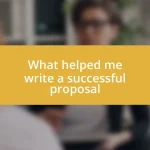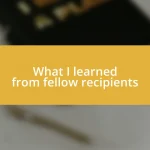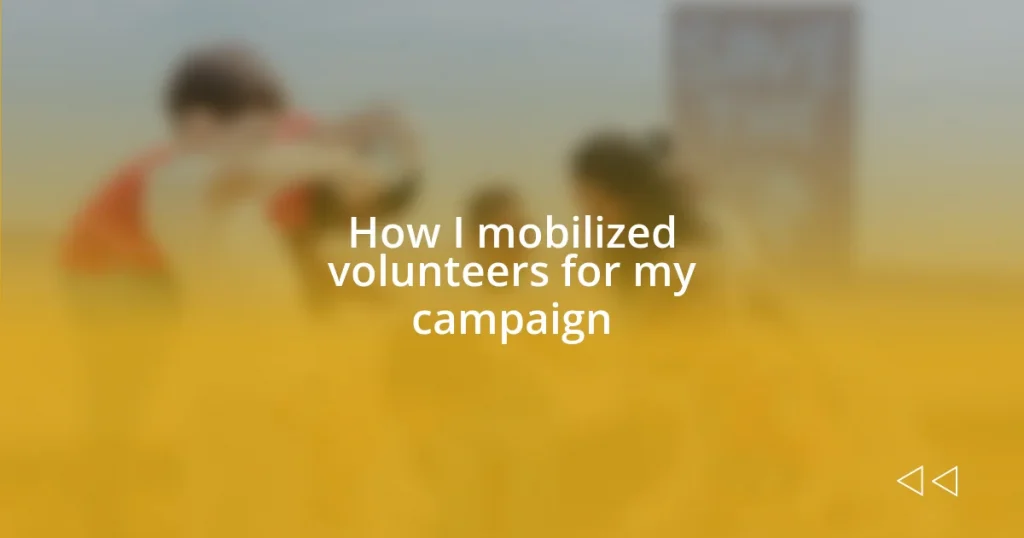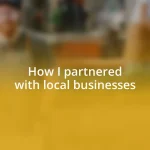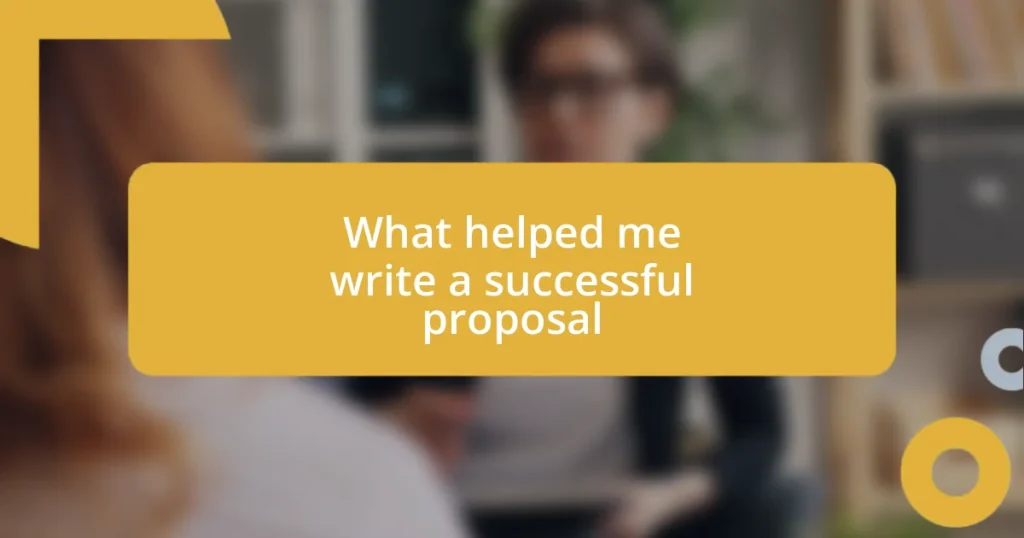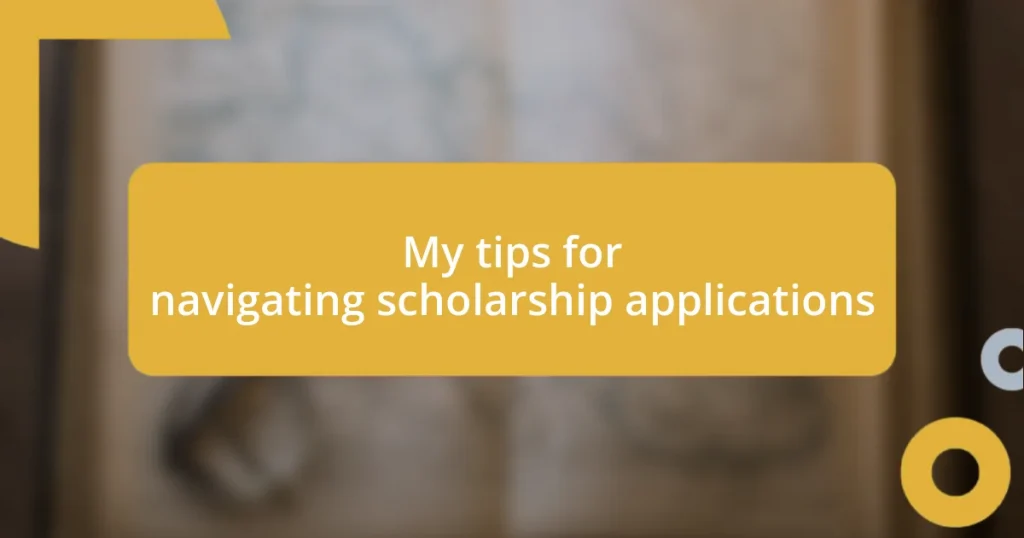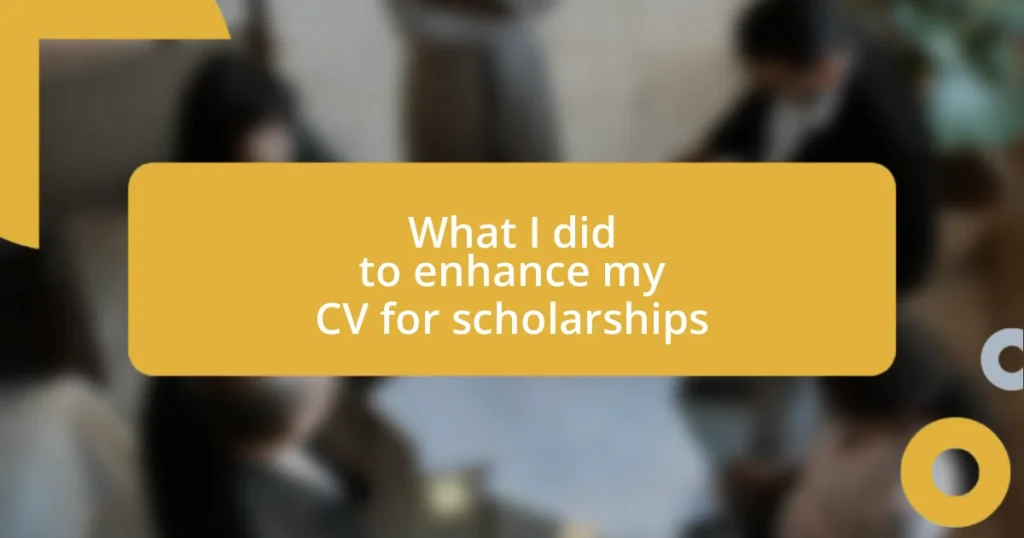Key takeaways:
- Identifying potential volunteers through personal networks and community engagement leads to deeper connections and broader support.
- Creating an authentic and relatable campaign message, enriched with visuals, fosters emotional connections and drives engagement.
- Recognizing and retaining volunteers through acknowledgment, celebration of successes, and providing growth opportunities enhances commitment and teamwork.
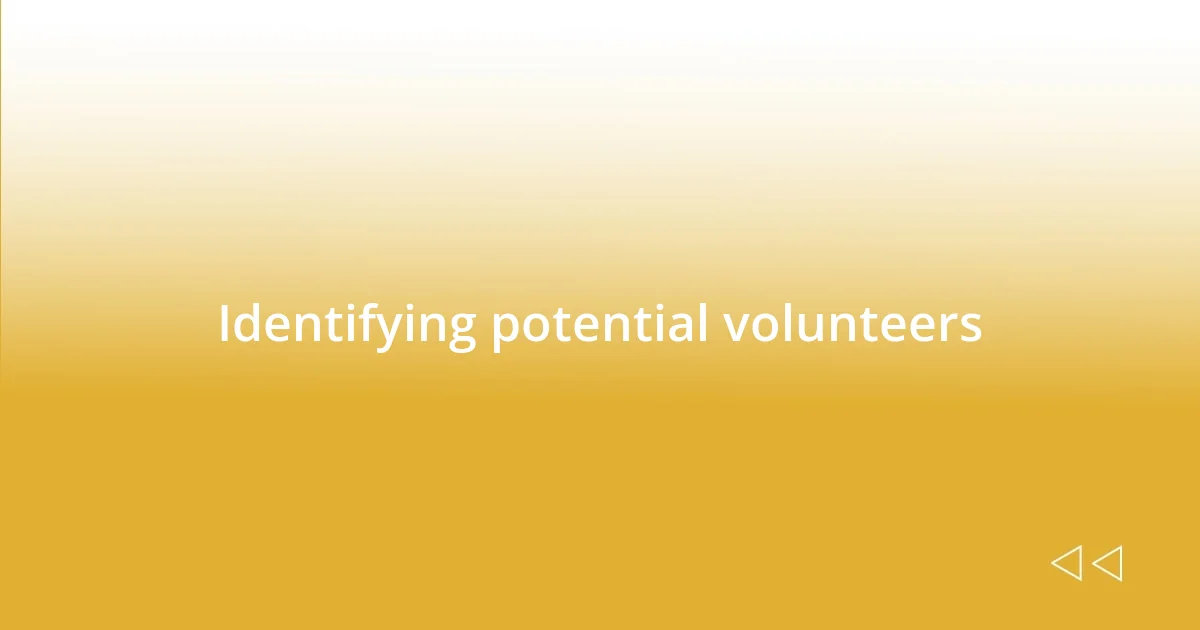
Identifying potential volunteers
One effective way I identified potential volunteers was by tapping into my existing networks. I reached out to friends, family, and colleagues, asking them if they knew anyone passionate about our cause. Isn’t it fascinating how often our closest connections hold the key to unlocking broader networks?
I also took the time to attend local community events. Striking up conversations with attendees helped me gauge their interests and whether they’d be excited about contributing to my campaign. I vividly remember meeting an enthusiastic young woman at a local fair who lit up when discussing issues we were addressing—her eagerness made her a prime candidate for outreach.
Social media platforms became a treasure trove for finding potential volunteers, too. By posting engaging content about our mission, I was able to draw out individuals who resonated with our message. Isn’t it surprising how a single post can spark interest in someone you’ve never met? Engaging with those comments led to meaningful conversations that helped me connect with passionate individuals eager to contribute.
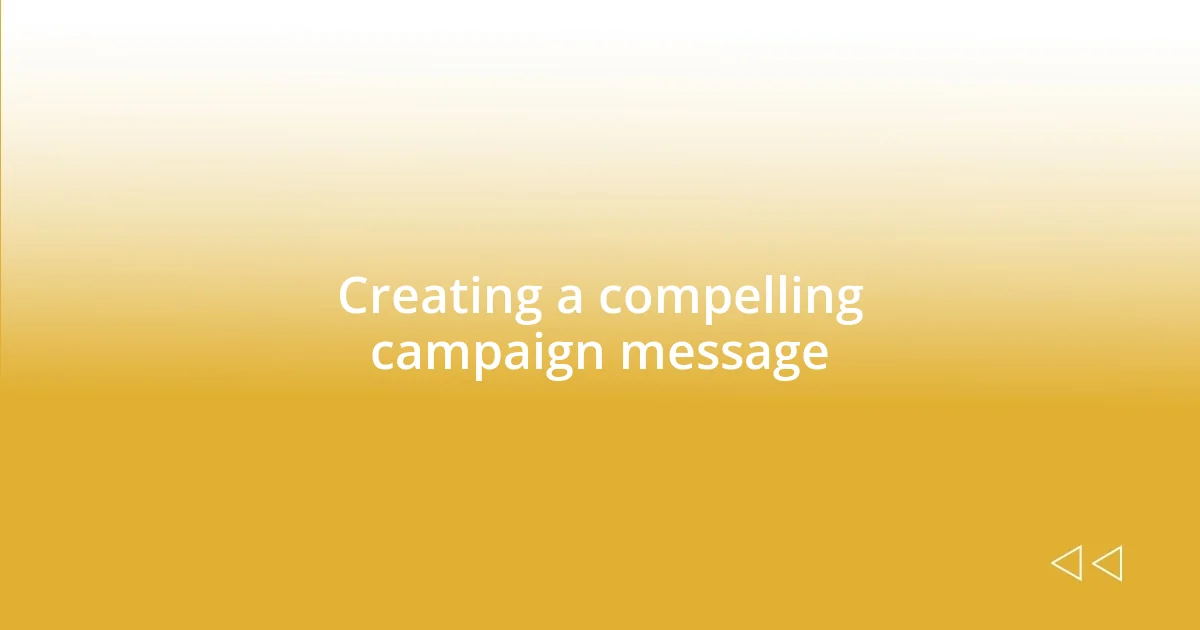
Creating a compelling campaign message
Creating a compelling campaign message is about authenticity and relatability. I found that the more I shared my personal connection to the cause, the more others felt inspired to join. For example, during one of my community meetings, I shared a story about how the issues we were tackling had directly impacted my family. The room’s energy shifted; you could almost feel the collective empathy, and I noticed several attendees nodding in agreement. This shared understanding created an emotional bond that made it easier for them to visualize their own roles in the campaign.
As I crafted my message, I emphasized clarity and urgency. It was essential for my audience to know that every single action mattered. One memorable moment arose when I hosted a small gathering to brainstorm ideas. We spent hours discussing various aspects of our campaign, and at one point, a volunteer became emotional, describing how the message had resonated with her. It was then that I realized that a compelling message isn’t just about the content—it’s about igniting a fire in people’s hearts that compels them to act.
Incorporating visuals into my message was another critical strategy. I created infographics to illustrate the impact potential volunteers could have. One specific infographic showed stats based on our community’s demographics and how their involvement could bring about tangible change. Seeing the numbers laid out graphically made it easier for people to digest the message. It sparked interest and made them feel that their contributions would lead to real, measurable outcomes.
| Elements of a Compelling Campaign Message | Examples from My Experience |
|---|---|
| Authenticity | Sharing a personal story about family impact |
| Clarity | Using straightforward language to emphasize urgency |
| Emotional Connection | Encouraging heartfelt discussions among volunteers |
| Visual Aids | Infographics to show impact and engage interest |
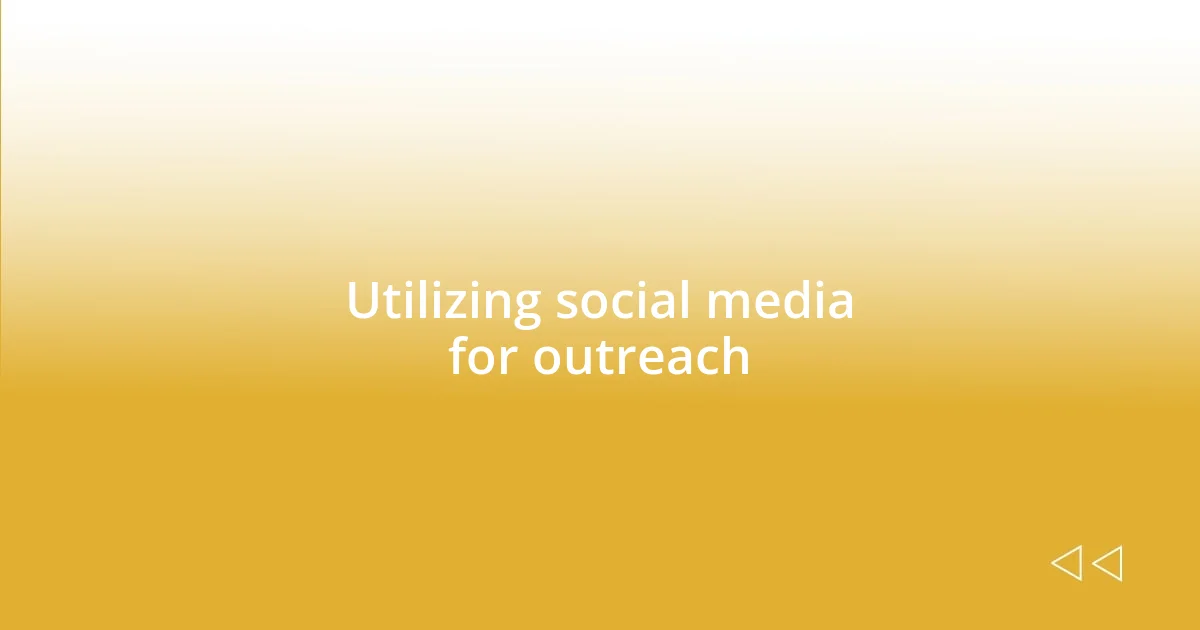
Utilizing social media for outreach
Engaging potential volunteers through social media truly transformed my outreach efforts. In particular, I found that using platforms like Facebook and Instagram allowed me to create a dynamic dialogue with my audience. I remember posting a behind-the-scenes video of our campaign preparation. The mix of authenticity and excitement drew in comments from folks who wanted to get involved. It felt incredible to watch strangers evolve into enthusiastic supporters right before my eyes as we shared our journey in real time.
To maximize the impact of my social media outreach, I incorporated several strategies:
- Storytelling: I shared personal anecdotes that highlighted the importance of our mission, sparking emotional connections.
- Interactive Posts: I created polls and questions that invited followers to share their thoughts, fostering community engagement.
- Visual Content: Eye-catching images and videos made our posts more shareable, expanding our reach to a wider audience.
- Consistent Updates: Regularly updating followers with campaign progress helped maintain excitement and momentum.
- Volunteer Spotlights: Sharing stories of current volunteers allowed others to see themselves in those roles, inspiring participation.
By being intentional about how I used social media, I could tap into a wellspring of support—sometimes from places I least expected. Finding that one heartfelt comment from a local person, expressing a desire to join us, reminded me just how powerful a simple post could be in mobilizing a community.
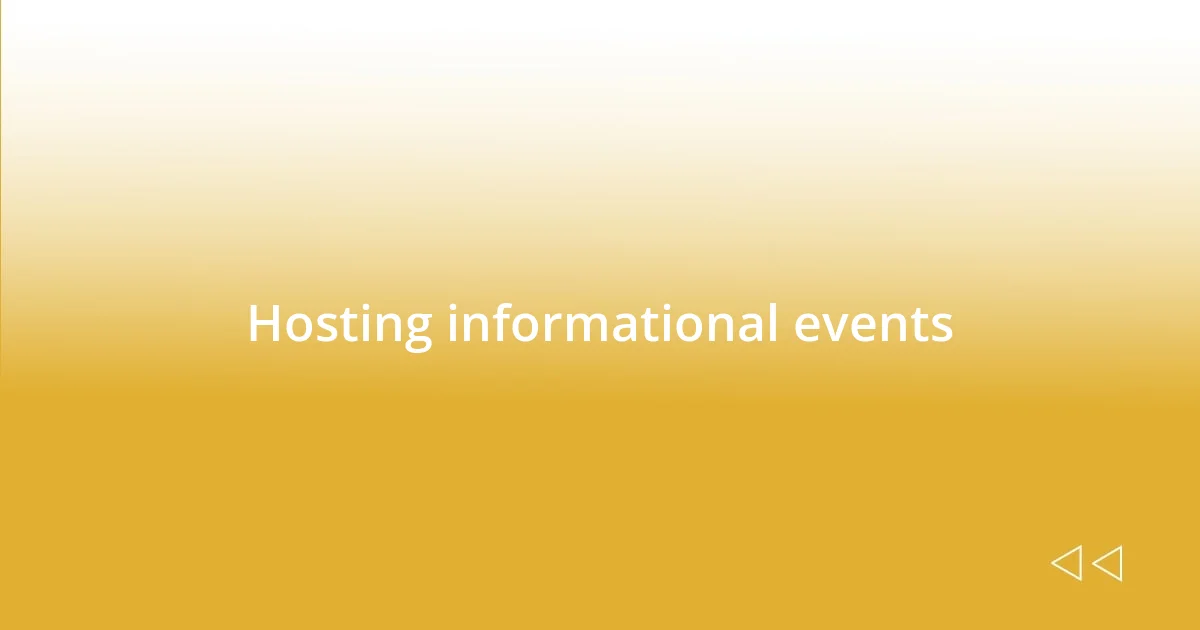
Hosting informational events
Hosting informational events was a game-changer for my campaign. I vividly remember one particular evening when we invited community members to a local café for an open forum. The ambiance was warm, filled with candles and friendly chatter, which set the stage for honest discussions. As I shared my vision, I could see the curiosity in their eyes, along with a sense of connection brewing among attendees. It made me realize—what better way to engage than to create an environment where everyone felt welcomed to share their thoughts?
Another strategy that worked beautifully was incorporating interactive elements into our events. Once, I set up small breakout groups where participants could brainstorm solutions to the issues we discussed. The enthusiasm was palpable; people were not just listening; they were contributing ideas they were passionate about. It was rewarding to see individuals who had never met before come together and debate how we could make a difference. It made me think—how often do we miss opportunities to unify voices simply because we stick to traditional presentation formats?
Lastly, I always emphasized transparency during these informational gatherings. One night, after sharing both successes and setbacks from our campaign, a volunteer approached me with tears in her eyes, expressing gratitude for the honesty I showed. It struck me then how much people crave authenticity—sharing not only hopes but also challenges fostered deeper connections. I often wondered, how can we expect a community to rally behind us if we don’t give them a true glimpse of our journey? Each experience during these events reinforced the fact that fostering open dialogues can truly fuel a movement.
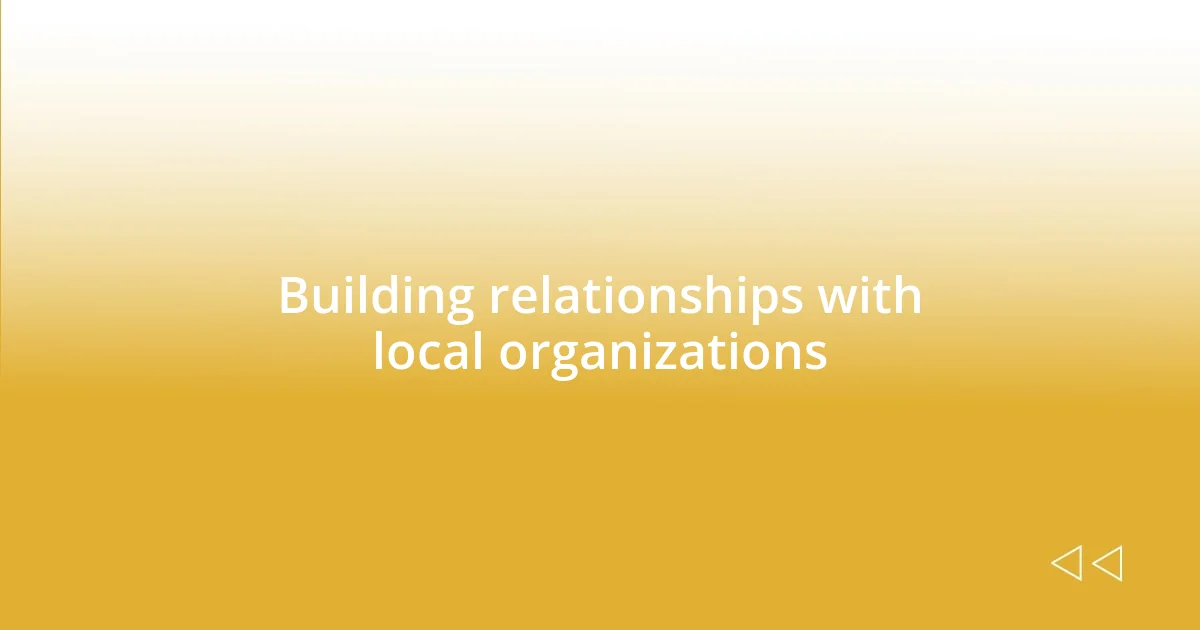
Building relationships with local organizations
Building relationships with local organizations became a cornerstone of my campaign strategy. It was often while volunteering at community events that I discovered the remarkable power of collaboration. I recall attending a local charity drive and striking up a conversation with a leader from a nearby nonprofit. As we chatted about our shared goals, I realized that we were not just allies; we were kindred spirits willing to drive change together. That connection eventually led to joint initiatives, amplifying both our messages and expanding our reach to more volunteers.
Every time I approached an organization, I made it a point to focus on empathy and mutual benefit. I remember when I reached out to a local environmental group to discuss potential partnerships. Instead of presenting a formal pitch, I opted for a personable coffee meeting. This relaxed atmosphere allowed us to explore synergies rather than merely exchanging ideas. It hit me then—how often do we overlook the value of simply being human in our outreach efforts? Those genuine connections can easily blossom into vibrant collaborations.
Additionally, I’ve found that the best partnerships thrive on shared values. In one instance, I aligned with a local youth mentorship organization that resonated deeply with my campaign’s mission to empower the next generation. Together, we organized workshops that not only educated young people but also provided hands-on volunteer experiences. The excitement was palpable, and it wasn’t just about numbers; it was about creating a sense of community. I have to wonder—when we create opportunities for others to shine, don’t we ignite a collective spark that transcends our individual missions?
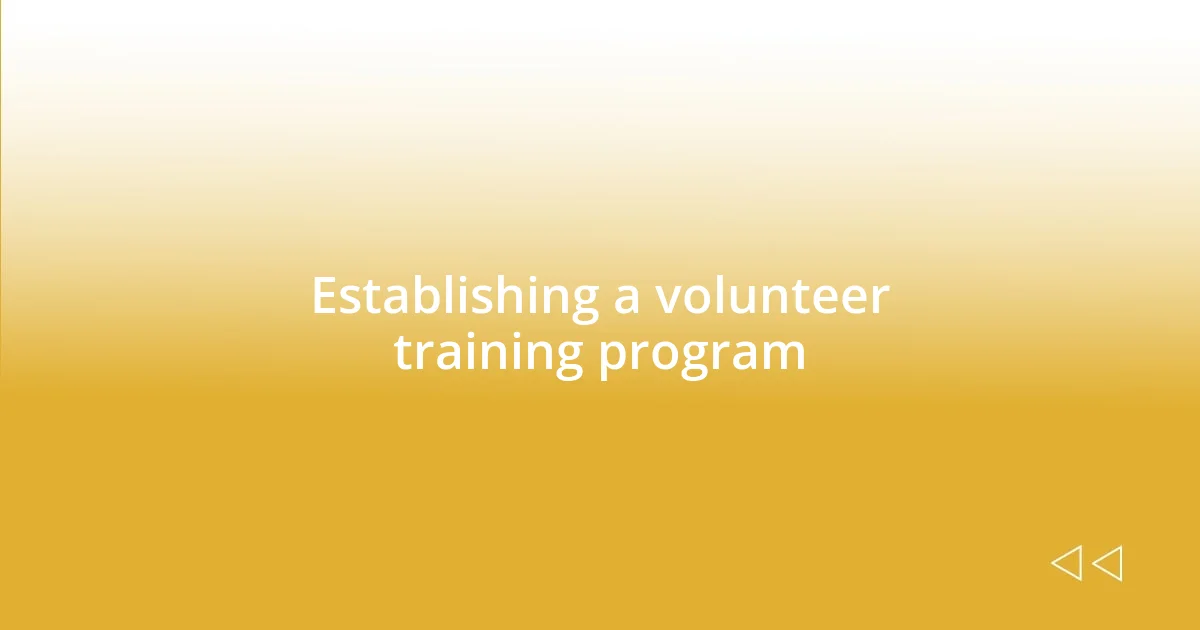
Establishing a volunteer training program
Establishing a volunteer training program was pivotal in turning enthusiastic individuals into effective advocates for my campaign. I remember the first training session vividly; I had gathered a diverse group, each with different skills and backgrounds. As I shared the campaign’s goals, I could sense their eagerness, but I also understood that enthusiasm alone wouldn’t prepare them for the challenges ahead. So, I started integrating hands-on scenarios, allowing them to practice real-life situations, which made their training feel relevant and empowering.
Every week, I introduced a new topic, whether it was communication techniques or grassroots organizing strategies, always encouraging feedback and questions. One time, a volunteer expressed feeling anxious about speaking to voters. I guided her through a mini role-play, where I pretended to be a skeptical voter. That interaction transformed her—it was incredible to witness that shift from doubt to confidence. It made me reflect on how essential it is to create a supportive environment where volunteers feel safe to learn and grow.
I also emphasized the importance of ongoing support and connection beyond just the initial training. I set up a buddy system, pairing experienced volunteers with newcomers. This network not only fostered teamwork but created friendships. One day, while catching up with them over coffee, I heard how one volunteer helped another navigate a particularly tough conversation with voters. It made me think—how often do we underestimate the power of peer support? When we invest in relationships, we build a resilient team ready to face any challenge together.
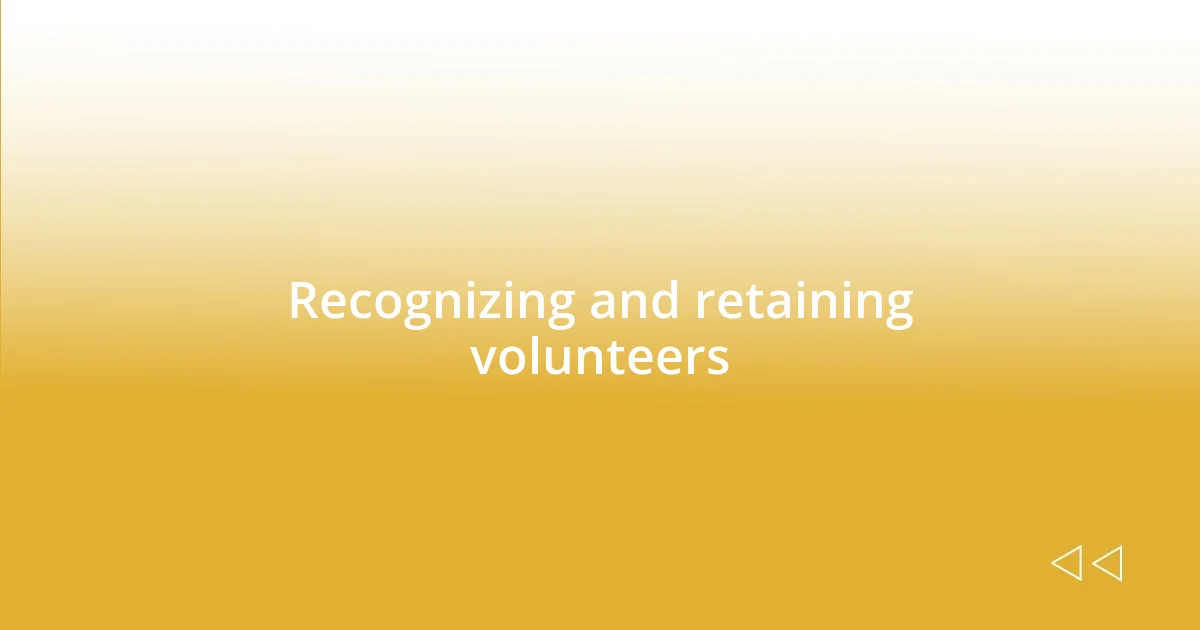
Recognizing and retaining volunteers
Recognizing and retaining volunteers is essential for sustaining momentum in any campaign. I found that acknowledging the hard work of my volunteers went a long way in keeping them engaged. One evening after a particularly challenging event, I sent out personalized thank-you notes. It was heartwarming to receive replies that expressed how much they appreciated the recognition. Don’t you think a simple “thank you” can truly invigorate someone’s spirit?
In addition to verbal recognition, I made it a point to celebrate our successes together. For instance, I hosted a small gathering after we achieved a significant milestone. We shared stories, enjoyed good food, and reflected on our journey. It was during this gathering that one volunteer disclosed how the camaraderie helped her overcome her fears about public speaking. Moments like these remind me—how valuable is it to create a space where our volunteers feel seen and valued?
Retention also hinges on creating opportunities for growth. Early on, I implemented a feedback loop, asking for input not only on campaign strategies but also on how they felt in their roles. When one volunteer expressed a desire to take on more responsibility, I invited her to lead a community outreach initiative. Watching her grow in confidence affirmed my belief that fostering a sense of ownership can truly transform engagement. Isn’t it fascinating how empowering others can lead to a collective drive toward success?
